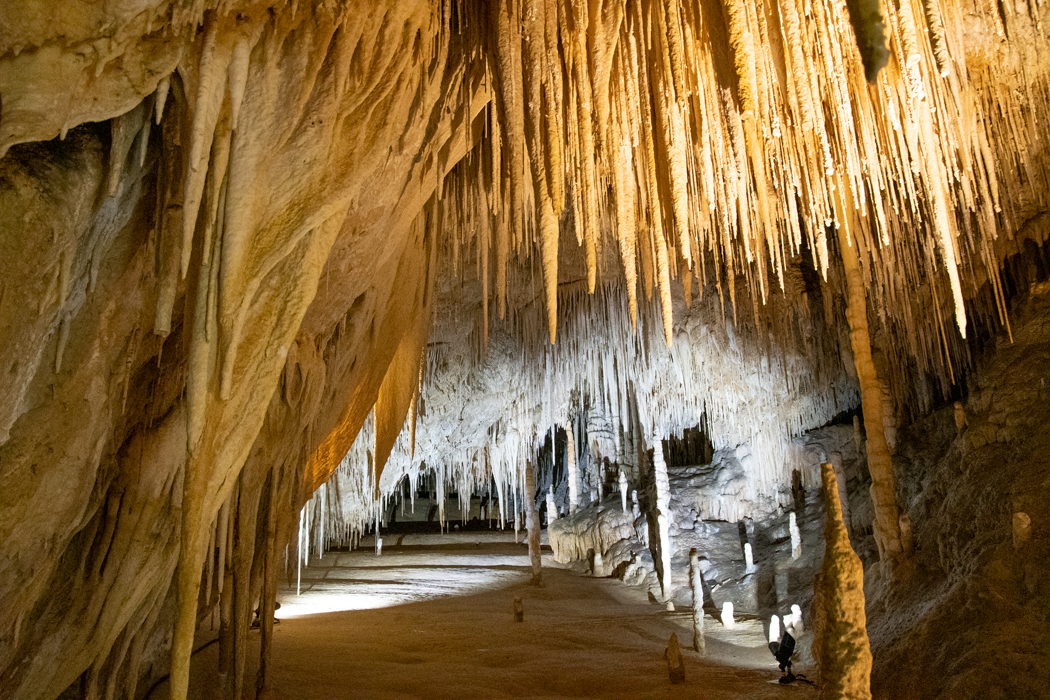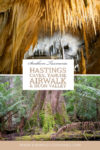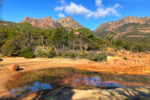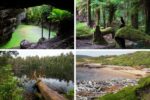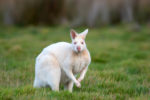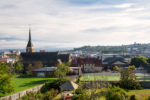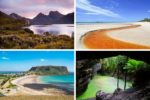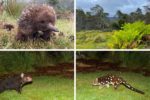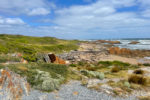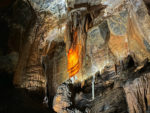Once you have explored the iconic locations around Hobart, like the Bruny Island, Tasman Peninsular, Porth Arthur, and Mount Wellington you may want to get off the beaten path and visit some less-known destinations. The tour to Hastings Caves and Tahune AirWalk in the southern forest is the perfect opportunity to do that. Apart from visiting the cave and the southern forest, this tour also takes in the beautiful Huon Valley which you wouldn’t want to miss.
The Hastings Caves tour is offered by Daytripperz, but you could also take this trip as a self-drive adventure and follow the same itinerary. I didn’t have a car on my last trip to Hobart, so I had no choice, but having met Nick, our guide, I would’ve chosen the tour even if I had my own transportation. Nicks’s knowledge, enthusiasm, and knack for storytelling made this trip an even more memorable experience.
Whether you are thinking of taking a day trip to Tasmania’s far south or joining a tour, here’s the lay-down on what to expect from this remote part of the state.
Into Tasmanian Far South
We left Hobart as the last fiery swaths of sunrise were fading in the winter sky, and the humidity in the air began condensing into a fluffy blanket of mist. There were only 4 other ladies on the bus (poor Nick) so we all spread out comfortably over double seats. You don’t get this kind of luxury on the more in-demand day tours.
The ladies and I hit it off as soon as we climbed into the bus. This is another good thing about organized tours – they are a really good opportunity to meet people while travelling and learn about their experience at the destination you are visiting. I left this tour with recommendations for a good breakfast cafe, a cool shop, and a bag of fresh-from-the-farm apples as a gift.
Huon Valley
By the time we reached Huon Valley, the mist had settled in and the landscape outside the bus’ window looked downright enchanting. Named after Jean-Michel Huon de Kermadec – a french explorer and second in command to Bruni d’Entrecasteaux of Bruny Island fame, Huon Valley, is primarily an agricultural area that covers most of the south of Tasmania.
It is famous for its apples and especially for its cherries. Arguably the best cherries in the world, they are so popular in China that the local entrepreneurs stuff empty boxes of Tasmanian cherries with cherries from Chile and make a killing selling them as Tassie cherries.
We stopped for a coffee break at Huonville’s DS Cafe that’s decorated in an eclectic mix of styles: part a 50s roadside diner, part your grandma’ attic. A tea towel hanging pegged to a drawstring next to a collection of foreign currency bills suggested the we “Accept that some days you are the pigeon and some days you are the statue”. Today we were clearly the pigeons, staying in town only long enough to have a coffee and a snack.
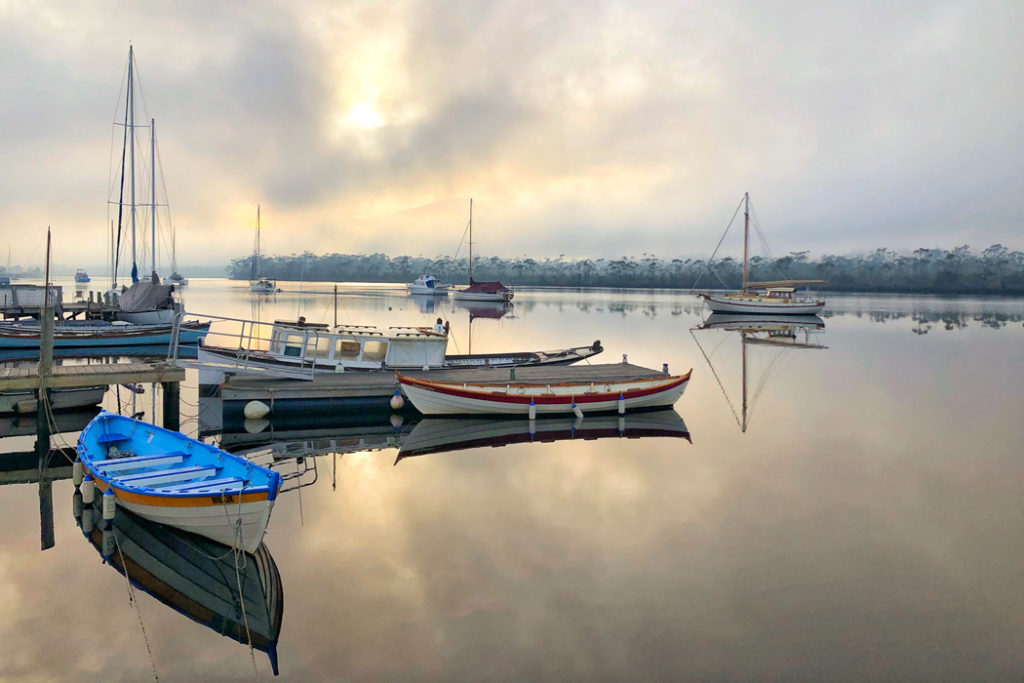
Next, we stopped at Franklin to check out the wooden boats built here at the wooden boat centre. But the scene we found at the wharf overshadowed the unique boats. The sun was fighting its way through the thick layer of mist throwing a golden haze onto the still surface of the water and the surrounding mountains that only came into view when the clouds of mist shifted.
Southern Forest
Back on the road, we drove past a small township of Geevston and entered the southern forest. This is the kind of Tasmanian forest I always imagined – tall, thick, and humid, with a lush understory of fern trees, and tendrils of moss hanging down the tree branches. The mist swirled around the soaring trunks of Blue gums and blotted out the sky. It was an eerie scene but it felt like the true face of this ancient landscape at the end of the world.
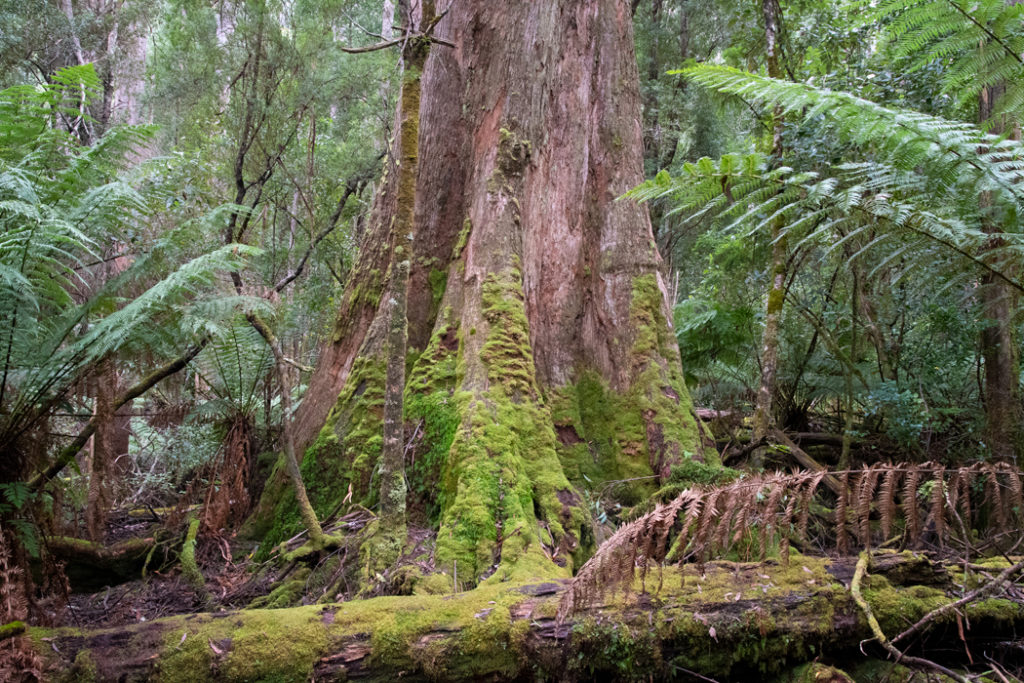
It crushed me to hear Nick explain that this forest was not safe from logging. Some of these trees are between 1,000 and 3,000 years old. The loss of every single tree of such an age is irreplaceable. Not in our human timeframes.
This is why the organizations that certify timber products for the market, like the Forest Stewardship Council and WWF, never certify practices involved in logging of the old-growth forests. So Tasmanian timber is not appealing to the international buyers and the logging industry in Tasmania is running at a loss. Yet the Tasmanian government props the logging industry supposedly because it creates jobs.
This is probably not the full picture, but it seems ridiculous to be cutting down this forest knowing that you can’t sell the timber. And why prop an industry that is as barbaric as it is unprofitable?
Tahune AirWalk
When we finally arrived at Tahune AirWalk and stepped out of the bus, it was probably 10 degrees colder than in Hobart. We walked through the mist-shrouded forest gradually climbing over a hundred steps to the start of the steel canopy bridge. A smaller version of Illawarra Fly in NSW Kangaroo Valley, Tahune AirWalk stretches for 610 meters 30 meters above the forest floor with the final cantilever section projecting at a height of 50 metres above the Huon River.
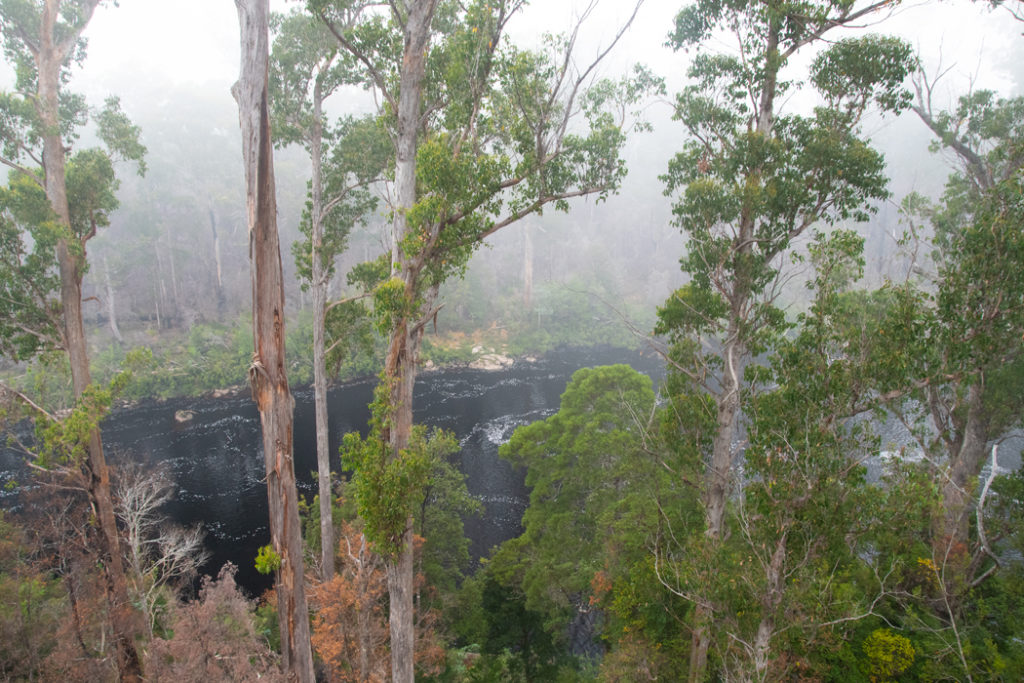
The forest we were walking through was showing signs of regeneration after being decimated by the Riveaux Rd fire in January 2019. Most of the tree trunks were fluffy with epicormic growth – leaves and small branches that grow from dormant buds on the tree’s trunk. But the canopy was still much thinner than what Nick used to see here.
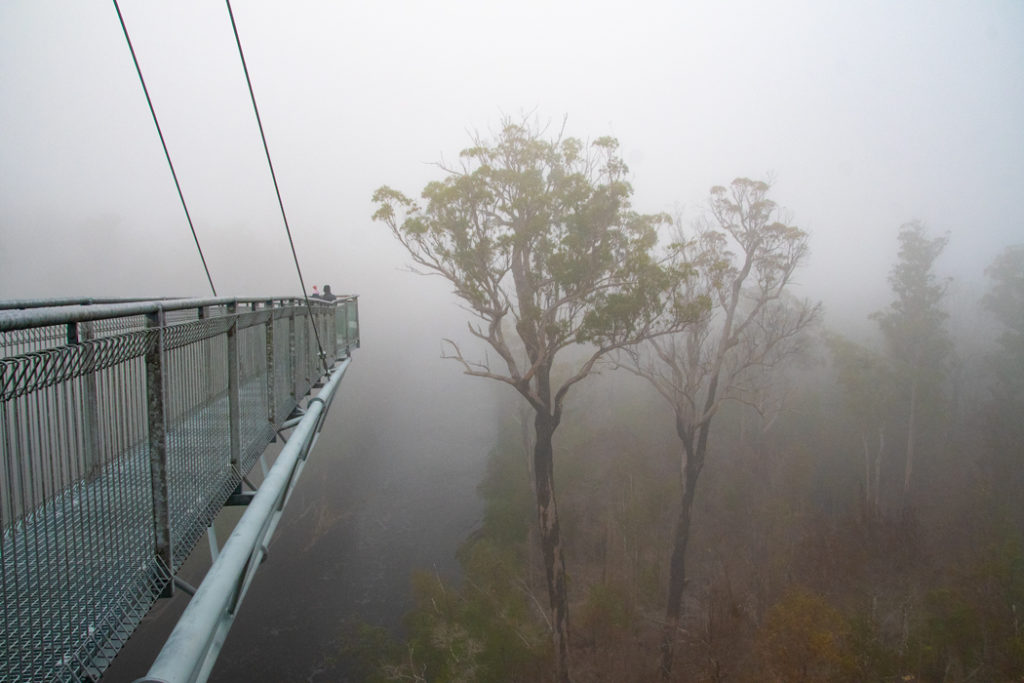
Walking through the mist among the towering trees 30 meters above the ground was an enchanting experience. It reminded me of the misty rainforest of Danum Valley in Borneo or Monteverde cloud forest in Costa Rica, although this was a very different forest. And the bridge was infinitely more stable.
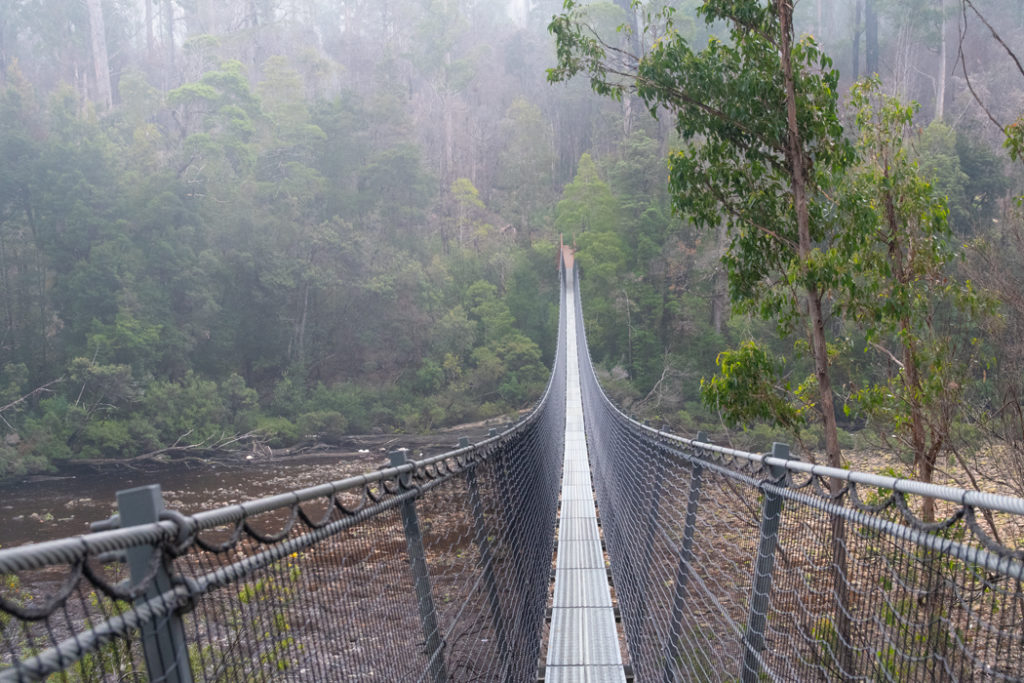
From the AirWalk we took McKays Track – a 3 km loop along the banks of the Picton and Huon Rivers with swinging bridges spanning across both rivers. The forest floor along this trail was dotted with colourful fungi that looked like multicoloured jewels scattered on the ground. Nick was super enthused about them and within about 10 minutes I caught his enthusiasm and started a new hobby – finding, identifying, and photographing fungi.
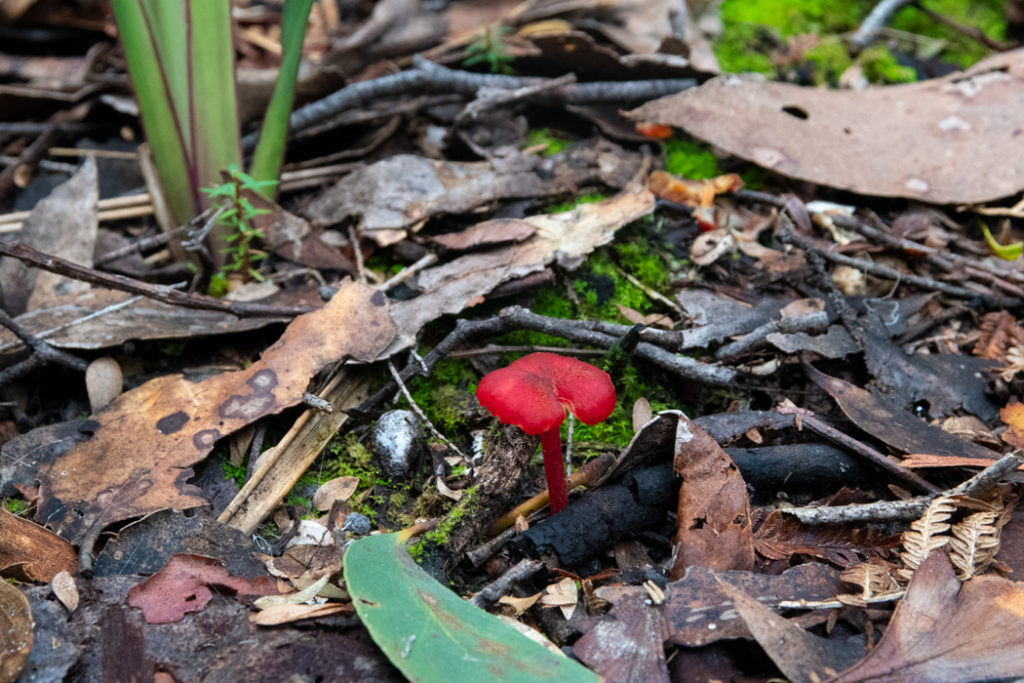
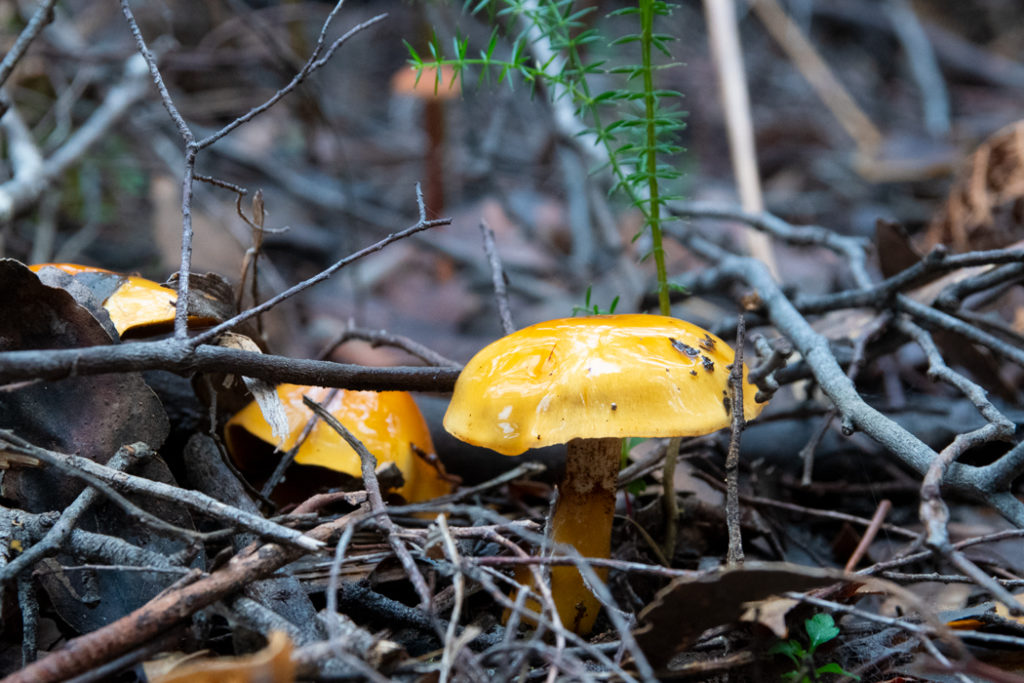
As we walked along the trail, Nick or I would constantly drop down to our knees to photograph a colourful mushroom and then jog after the others to catch up. The ladies were only too happy to play along and point out particularly bright or large specimens as we walked along.
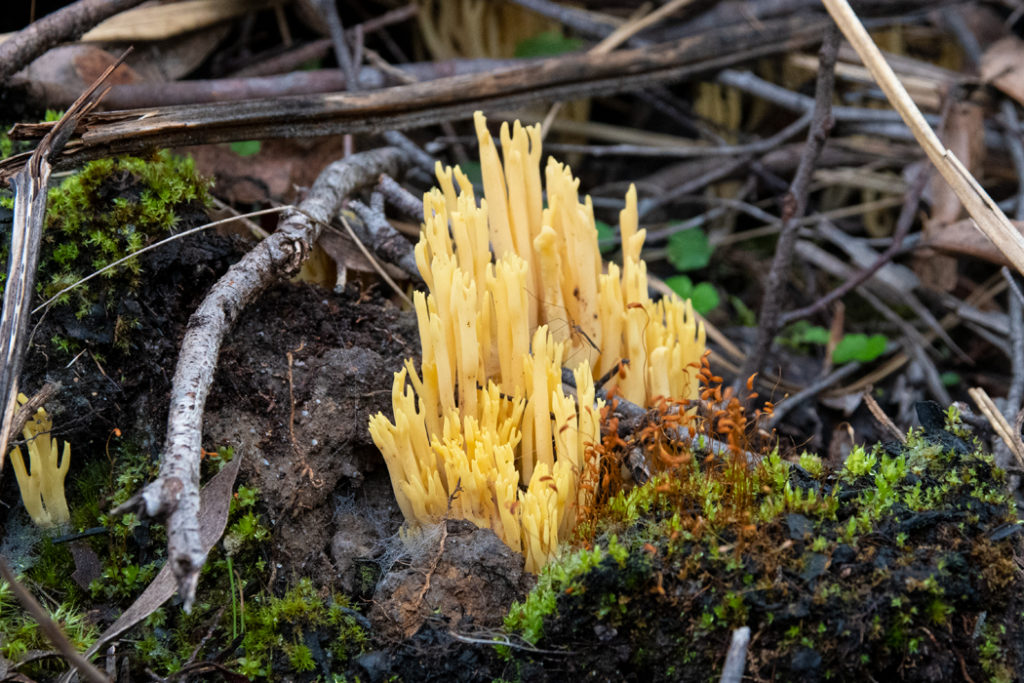
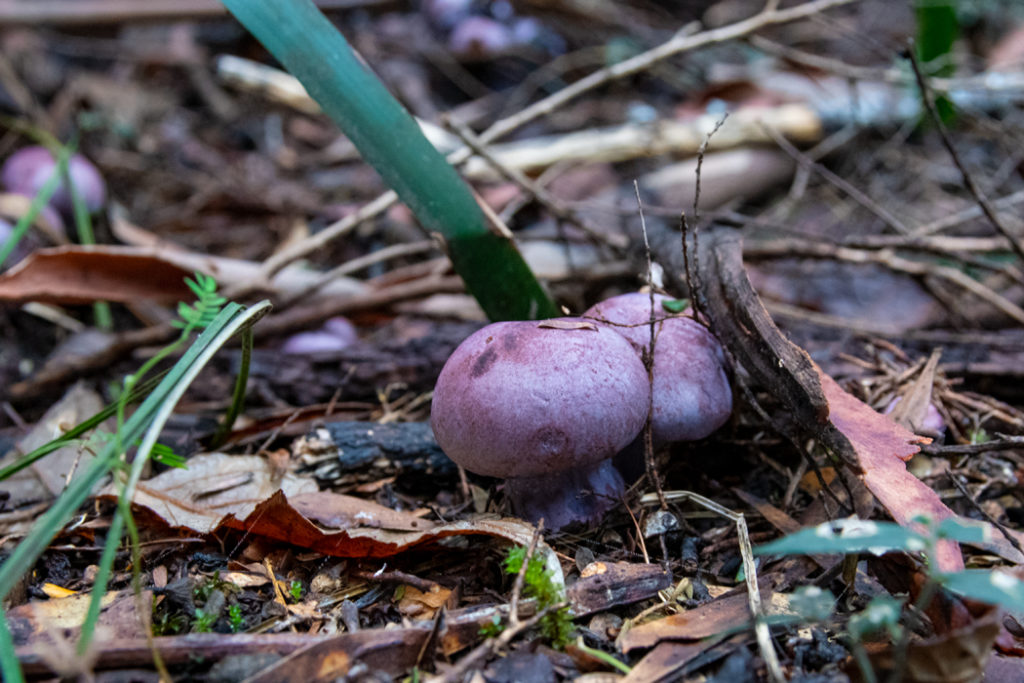
Hastings Thermal Springs
From Tahune AirWalk we headed to the Hastings Caves State Reserve located in the southernmost tip of Tasmania. We passed the town of Hastings – more of a scattering of houses around a bay, and within a few minutes arrived at Hastings Caves Visitor Centre.
Apart from selling tickets for the Hastings Caves tours, the Visitor Center has the best collection of Tasmanian natural history books that I’ve seen anywhere in the state. It is also a cozy spot for a coffee and a snack on a cold afternoon.
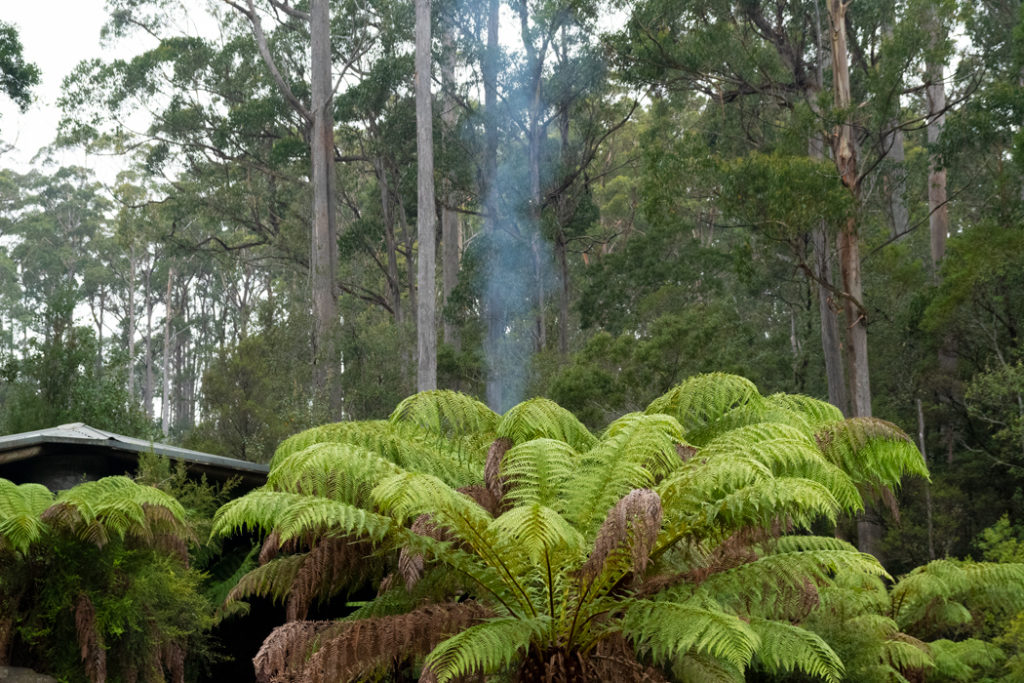
It is recommended that you arrive at least 45 minutes before your cave tour (you can book it here) because it’s a short drive and a walk to the cave from the car park. But if you have more time, try to arrive even earlier to explore the walking trails around the visitor centre.
That’s what we did. And after a quick cup of coffee, we headed for the trails. The main attraction at the visitor centre is the thermal pool that maintains a constant temperature of 28 degrees. But for some reason, instead of keeping the pool as a natural hot pool, the powers that be decided to convert it into a tiled suburban swimming pool, which makes it quite unappealing.
But while the pool looked a bit blah, the forest surrounding it was magic. There are two trails running alongside the hot springs – the very short Platypus Trail and a slightly longer Thermal Springs Walk. We took the longer trail that started and ended on the Platypus walk and took about 30 minutes at a slow meander.
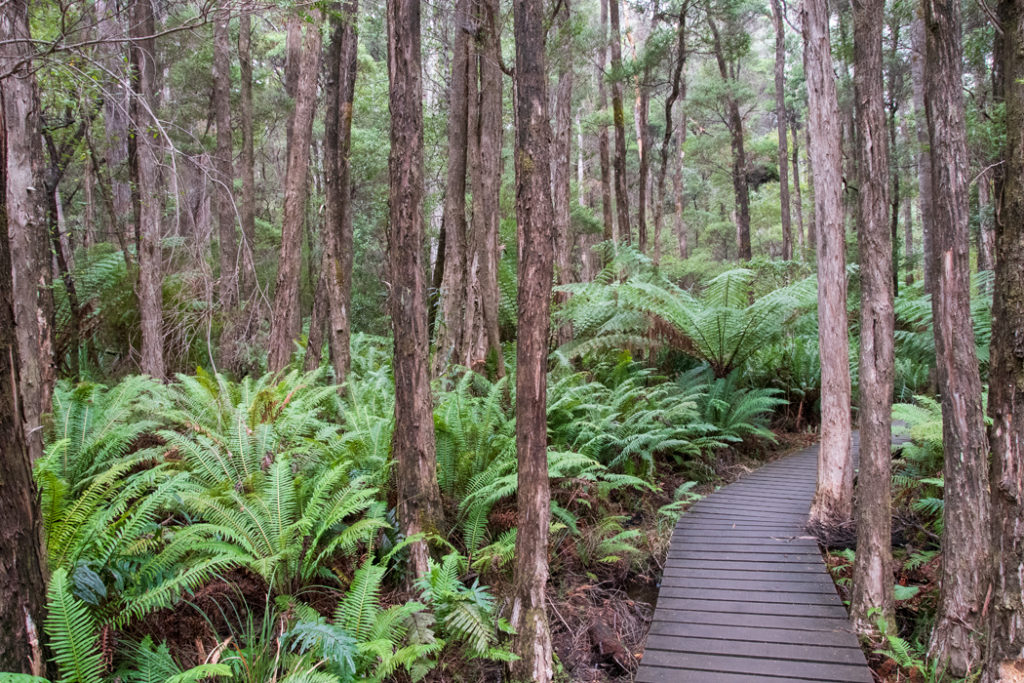
We spent quite a bit of time scanning the spring for platypus on the Platypus walk, but it seemed to be too early and too noisy for a platypus to be out. But thankfully my new hobby – the fungi, kept me well occupied.
The forest around us was incredibly atmospheric: tall tree trunks rose from the thick understory of ferns and the ground was blanketed by a fluffy carpet of moss. The trail ran on an elevated boardwalk so we didn’t have to worry about trampling this luscious environment.
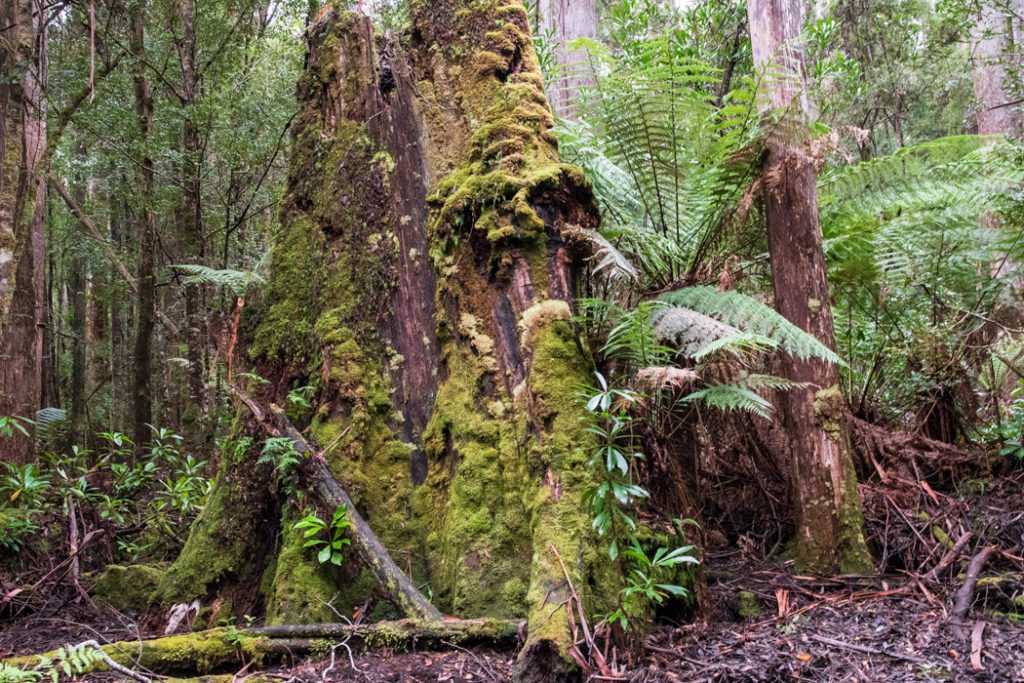
Here and there the hot spring came into view with tiny wisps of steam rising off its dark surface to dissipate into the surrounding mist. We walked past the spot where the hot spring met with a creek and it was a fascinating contrast of temperatures. Practically a spa salon for the local critters.
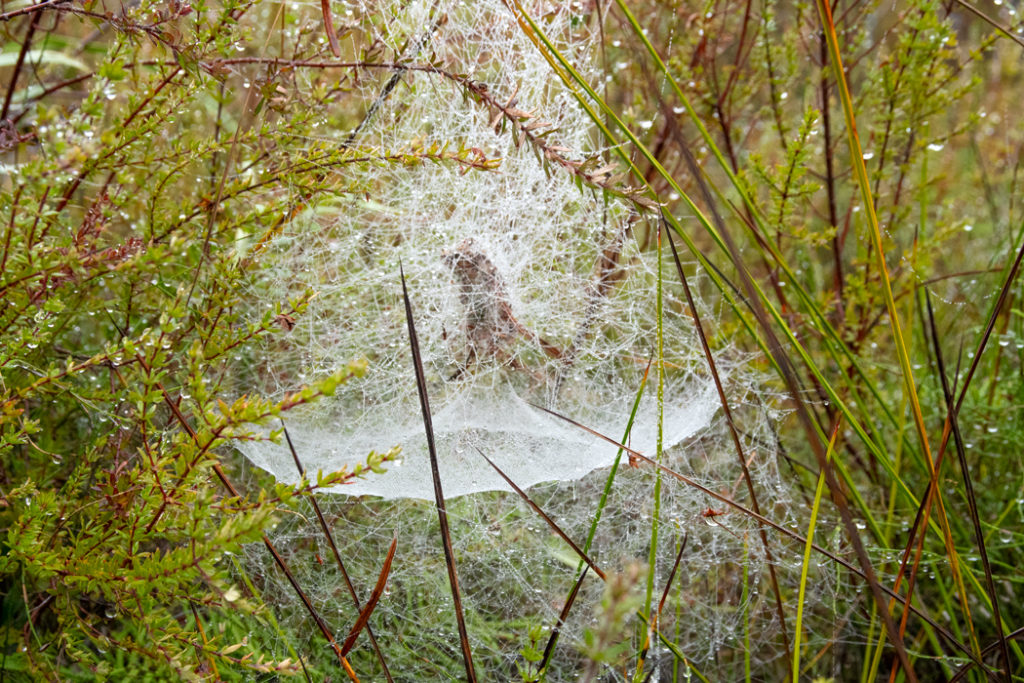
The Hastings Caves State Reserve sits on karst topography that formed by the erosion of dolomite rock. And like all karst landscapes, it is characterized by sinkholes, springs, and caves. And the most amazing cave in the Hastings Caves complex is just around the corner.
Hastings Caves
When we arrived at the Hastings Cave car park, we were the only car there. We followed the walking trail through the stunning wet eucalypt forest where every log, every trunk seemed to be covered by layers of thick deep-green moss. In winter, when rainfall is higher, this forest is at its best.
The eucalypts seemed to be impossibly tall, especially considering that this area has been extensively logged in the early 1900s and these trees are no older that 100 years old. It’s incredible how tall the trees can grow in such a short period, given the right conditions.
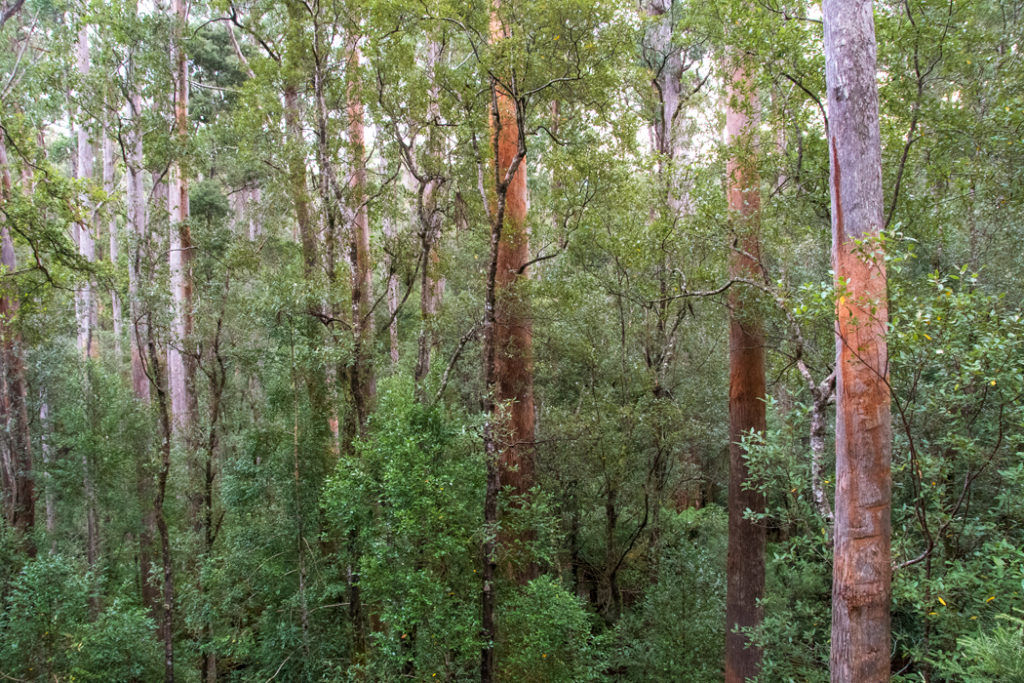
We had visited many parts of the stunning southern forest today and the further south we travelled, the more exaggerated its beauty became. On a misty winter day, this forest had a magical, Tolkienesque feeling to it.
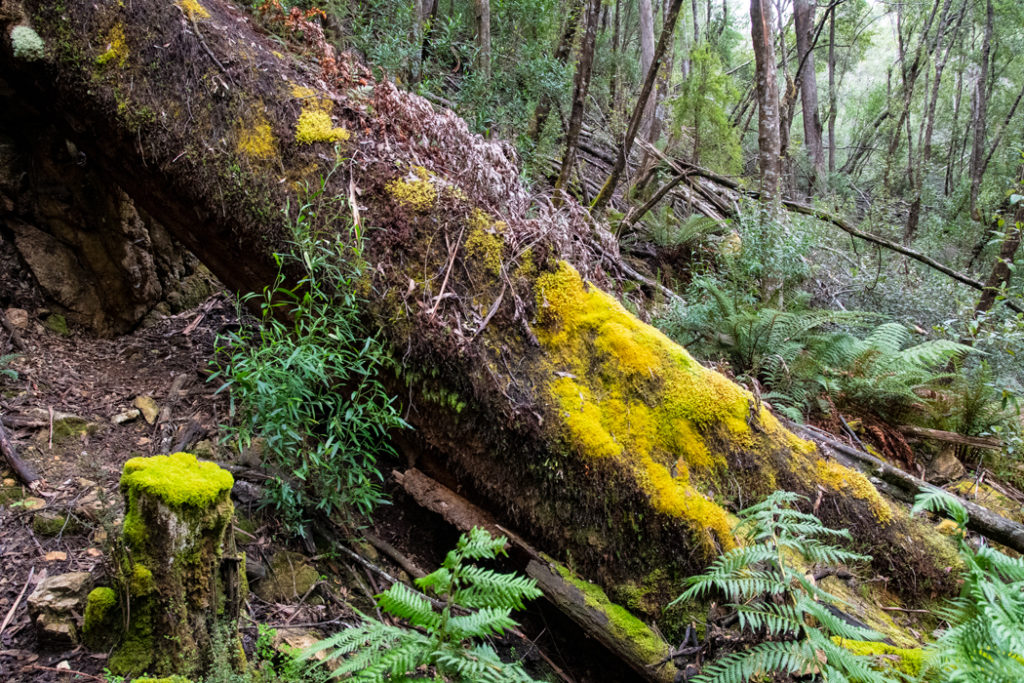
All too soon the trail end and we found ourselves at the wooden platform at the entrance to Newdegate Cave – the only cave in the Hastings Caves complex open to the public. Unlike most of Australia’s large caves, like the Jenolan Caves in NSW, Newdegate Cave wasn’t formed in limestone but in dolomite. Extending 3 kilometres into the hillside, it is the largest dolomite cave in the country and one of the largest caves of this type in the Southern Hemisphere.
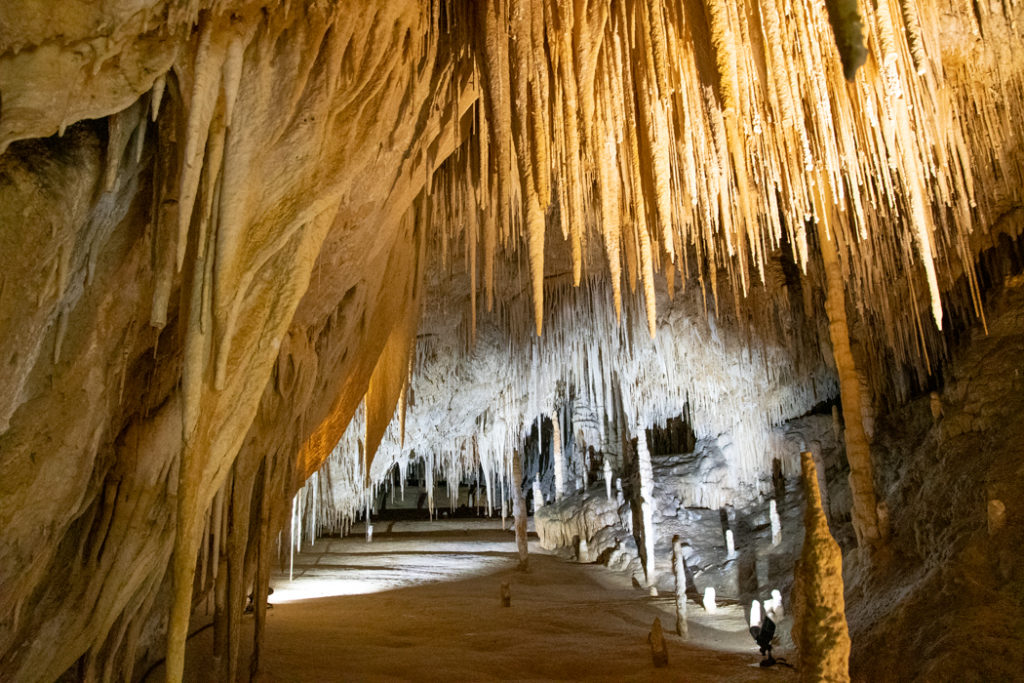
We met our Parks and Wildlife Service guide Tim at the cave entrance and after a quick introduction to cave etiquette, we followed him into the dimly-light interior. We stopped at the first metal railing and listened to Tim’s story of how in 1917 a team of loggers were felling a huge stringybark. As the tree began to fall, the men rushed to get clear off its path ducking into a cavity that turned out to be the cave entrance, sloping steeply. A large branch followed the men into the cave spraying debris all around the entry.
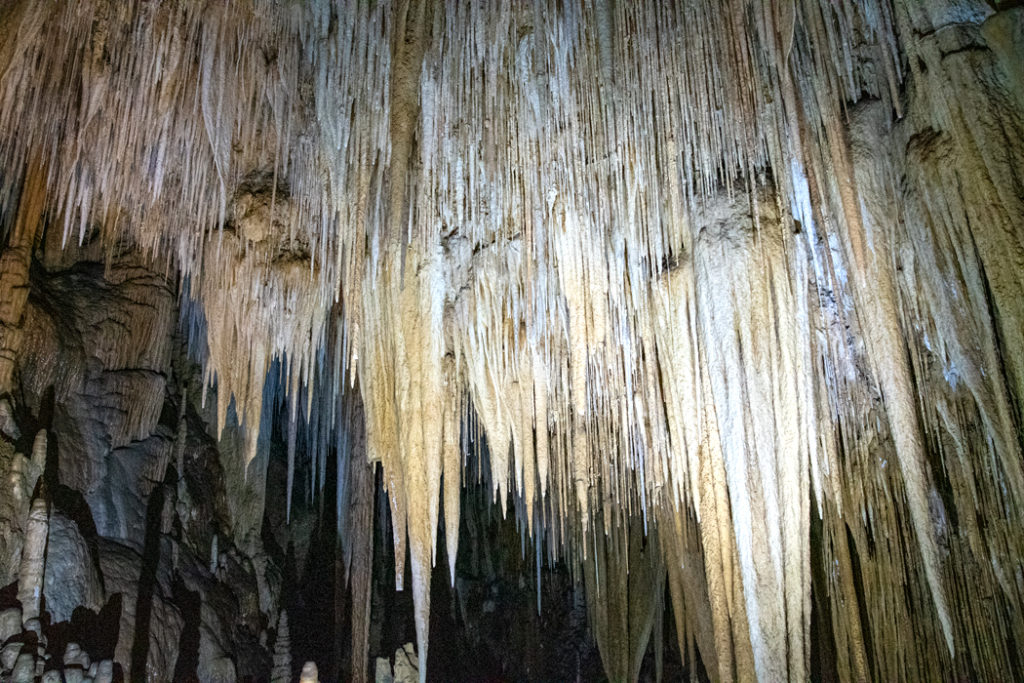
To give us a sense of what it would have been like for these men, after reminding us that all they had was the light filtering from the outside, Tim turned off the lights. Suddenly, we found ourselves in the deepest darkness imaginable. Had these man gone a few steps further they would’ve tumbled down a 15-meter drop. The cave is incredibly deep – about 40 meters. Today, it takes about 250 steps to reach the lowest level of the tourist area of the cave.
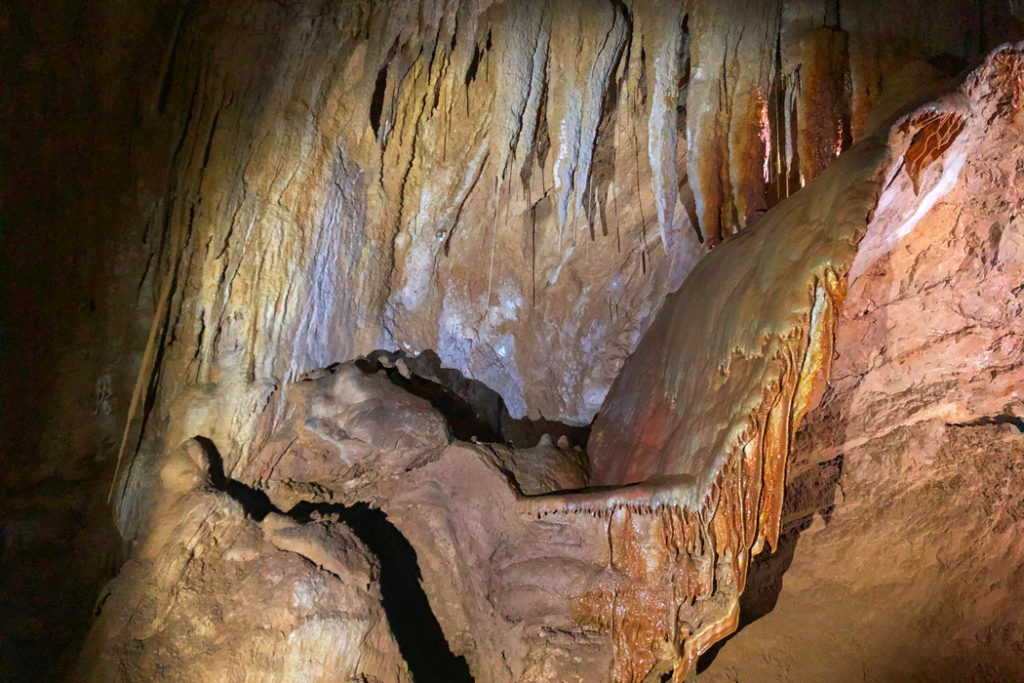
It must’ve been quite a sight in 1917. According to some documents from that time:
“there were millions of glowworms inside, and the stalactitic sights were quite as fine as the Northern caves. Unfortunately, children had already done irreparable damage in a few minutes by smashing some of the finer stalactites with sticks”
There is no sign of glowworms in the cave now (you can see glowworms at Gunns Plains Caves in the north west of the state). No bats either. But the darkest corners of the cave are home to some of the most bizarre creatures you can imagine, like a spider the size of a man’s hand.
Although the cave hasn’t been dated, the rocks that compose it are estimated to be around 630 million years old. They were formed on the seafloor in the area currently occupied by Japan. The chambers of the Hastings caves started to form much later – between 60 and 40 million years ago.
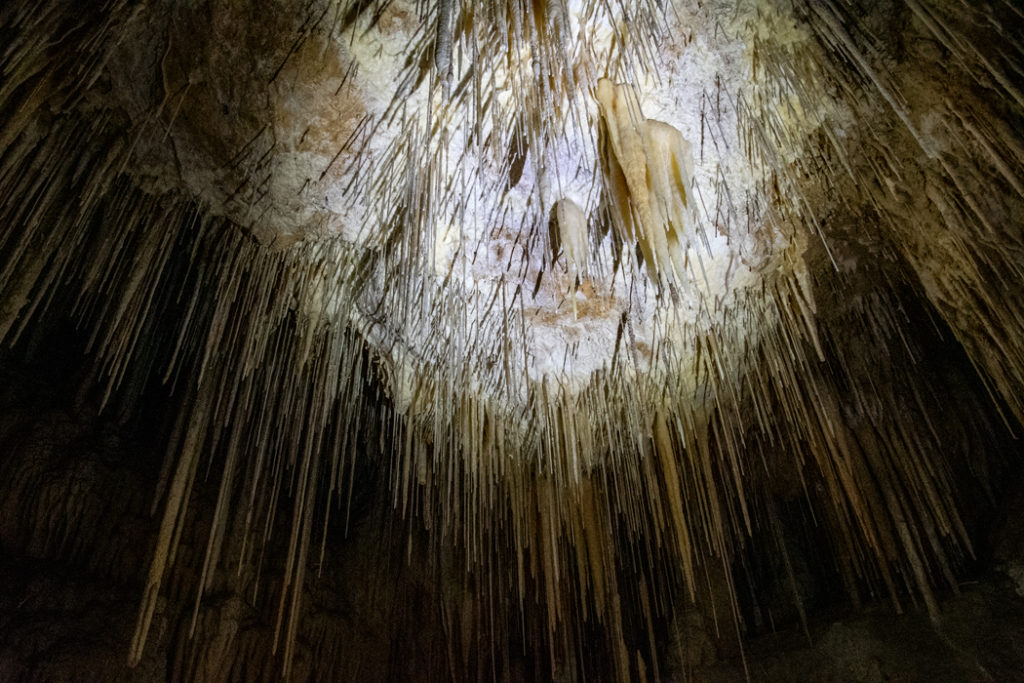
Millions of years of dripping water created an incredible array of crystals in the caves. The first 300 meters of Newdegate Cave (the section open to the public) are decorated with spectacular subterranean formations including flowstone, stalactites, columns, shawls, straws, stalagmites and the unusual helictites – the structures that shift from their vertical axis and grow in unexpected directions. The cave feels incredibly large and very mysterious.
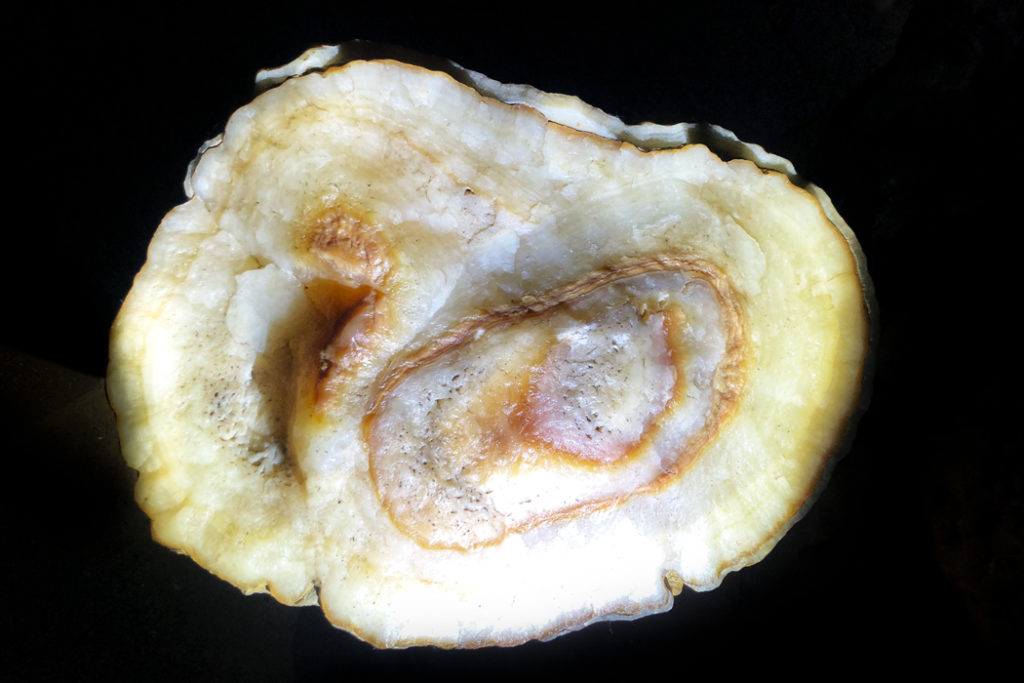
The Cave Tour
Guided tours of Newdegate Cave are run by Tasmania Parks and Wildlife Service. There are four or five tours each day, depending on the time of year. You can check the tour times here. The tour lasts about 45 minutes and costs $24 (adults) and $12 (children).
The tickets should be collected at the Visitor Center (location on the map) about 45 minutes before the start of the tour. It is a 5-kilometer drive from the Visitor Center to the Hastings Caves car park, followed by a short walk to the cave.
Hastings Caves and Tahune AirWalk Day Tour from Hobart
So what is the final verdict? At the end of the day, on the drive back to Hobart, Nick asked us what was the highlight of the tour for each of us. I could barely pick one. The magnificent southern forest, the deep underground cave, the incredibly picturesque Huon Valley – they were all highlights. Throw in the rugged beauty of Far South Tasmania itself, and you get one of the most interesting destinations in this part of the state.
If I had to choose between this tour and exploring the area independently, I’d choose the tour. Nick’s deep knowledge of the region’s ecology and history made our explorations so much more interesting. It made the difference between simply visiting the place and getting to know it. And it was blissfully relaxing to just kick back in your seat on the long drive back.
So if you are looking for something different to do in Hobart, for a chance to get off the beaten path and explore a stunning area that not many people visit, I’d highly recommend booking the Full-Day Tahune Airwalk & Hastings Caves Tour.
More Nature Destinations in Tasmania
- Things to do in Cradle Mountain: Walks, Wildlife & Adventure
- 10 Best Day Trips from Hobart, Tasmania
- Tarkine Drive: 2-Day Itinerary, Attractions & Accommodation
- Things to Do on Bruny Island: Guide to Itinerary Planning
- 15 Best Things to Do in Launceston: Where to Play, Eat, and Stay
- North West Tasmania Travel Guide: Iconic Highlights & Local Secrets
- Mountain Valley Wilderness Holidays Review
- Travel Guide to Edge of the World, Tasmania
- Visiting Gunns Plains Caves in North West Tasmania
- Gorgeous Beaches in Tasmania: North-West Coast

